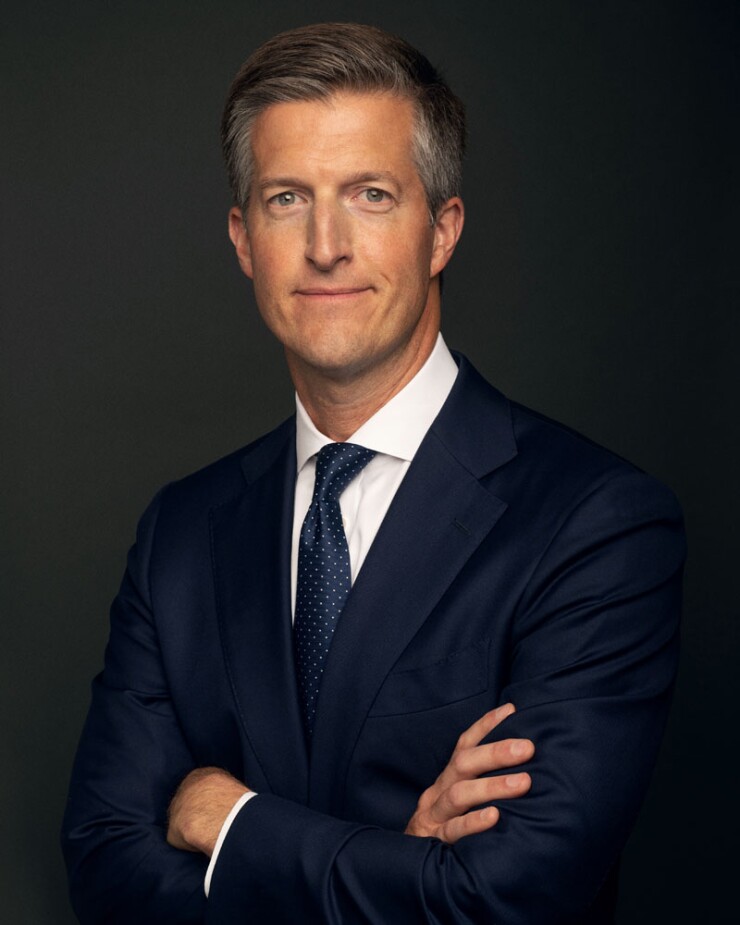Record assets are flowing into the independent channel. But increased competition and shaky markets could be signaling tough times ahead for financial advisors.
That’s the thinking of Cerity Partners CEO Kurt Miscinski. While the exodus to independence is a healthy sign for RIAs, financial advisors will likely find it harder to compete as the space becomes overcrowded with new entrants, he says. New RIA registrations grew 75% over five years as increasingly large teams break away from the wirehouses, according to a
That’s especially true as a potential bear market and increased volatility scare clients into pulling assets off the table, he says.
Cerity Partners is a national RIA serving more than 1,800 clients from six offices around the country, including in Cleveland, Los Angeles, New York, Chicago and Orange County. The New York-based firm offers complex services for ultra high-net-worth individuals, including tax and estate planning, insurance planning, legal services and wealth management. The majority of clients have a net worth in excess of $10 million, Miscinski says.

The private equity firm
Here’s what Miscinski has to say about the burgeoning independent advisory channel, the importance of a fiduciary standard and the possibility that tech giants like Amazon or Google are eyeing a spot in wealth management.
What are the biggest headwinds facing financial advisors?
The inevitable business market cycle contraction, or some form of recession — which is hopefully a modest one. RIAs generate a majority of fees based on assets. A contraction leads to lower revenue, and ultimately the need to keep clients content with the fact that you have to go through business market cycles and not panic. The increased volatility in the markets experienced in portfolios tends to create a higher sense of client anxiety about the preservation of their wealth.
Another concern is the ability to grow organically amid ever changing trends. The current big trend is the movement of talented financial advisors from what had been the strong foothold of global investment banks toward independent businesses. It’s a very competitive marketplace.
Where do you see the most benefits from new advisor technology?
Great technology continues to become available to RIAs of all sizes and at very attractive price points. Integrating that technology is becoming extremely powerful, especially around risk management. There are tools that allow financial advisors to make portfolio decisions right on their desktop. Also, sophisticated risk analysis software, like Blackrock’s Aladdin, can be integrated into portfolio planning tools. Combining financial planning and investment-oriented technology is quickly becoming the future. Just look at the Fidelity purchase of eMoney. Hopefully, Fidelity will bring that technology to RIAs.
Is there still a difference in the quality of technology at large and small firms?
The tools relating to portfolio investing, customer relationship management and financial planning are as available to the small RIAs as they are to the financial advisors at the largest global investment banks. That said, the wirehouses have built great tools for practice management that frankly smaller RIAs just can’t afford to build at this stage until better technology comes out. Wirehouse financial advisors can see client assets, assets by product and trailing 12-month revenues all on a neatly organized dashboard. This builds more client revenue and strengthens the client relationship.
RIAs have very powerful tools to make good investment decision and offer robust client reporting. The wirehouses have just scaled the business so they can easily afford to build proprietary technology. The RIAs just don’t have enough clients to justify those investments.
Will technology companies, like Facebook or Amazon, become a threat to wealth management?
They could. You have to be somewhat concerned about what it would mean if technology companies of that size and financial resources entered the market. Amazon and Google, in particular, could use voice-enabled technology to become digital financial planners, which would be very competitive in this industry. For the HNW segment, we have yet to see any form of digital advice really form permanent competition. There are technologies that better enable an advisor who serves those clients to be more efficient in determining the best decisions. But HNW clients are not showing a strong preference to have all their wealth management done by a digital advisor.
Should the industry require a fiduciary standard?
Overall, for the benefit of the people, it would be better if a fiduciary standard was enforced. I’m sure there will be a fair amount of lobbying done by the large global financial institutions that are not currently compliant with a fiduciary standard because it will change their business models. But clients are owed what’s in their best interest. There are parallels in other industries, like the medical field or the legal field. It’s good for the industry overall.
If human financial advisors have a reputation and an obligation, then there is a trust factor. If the public doesn’t have that trust, because the advisor might not be acting in the best interest of the client, Fintech could slowly start to overtake aspects of wealth management. A fiduciary rule will materially lower skepticism of working with a human financial advisor.





